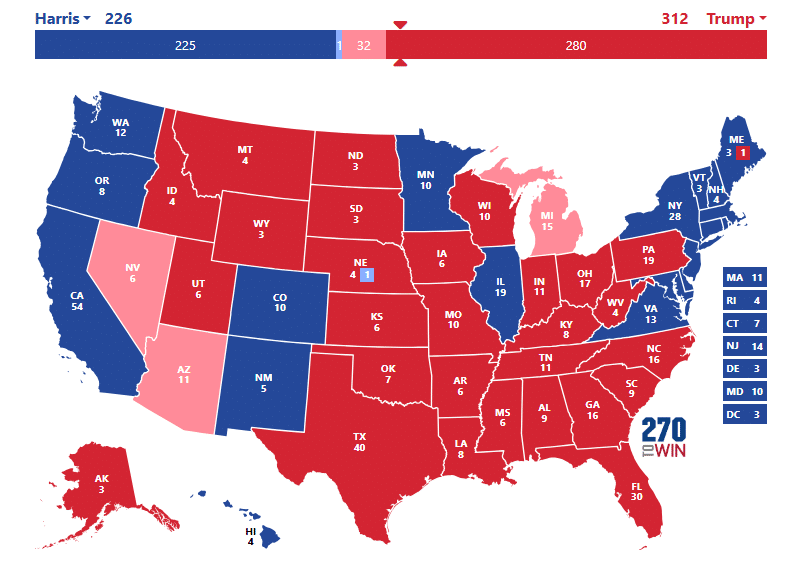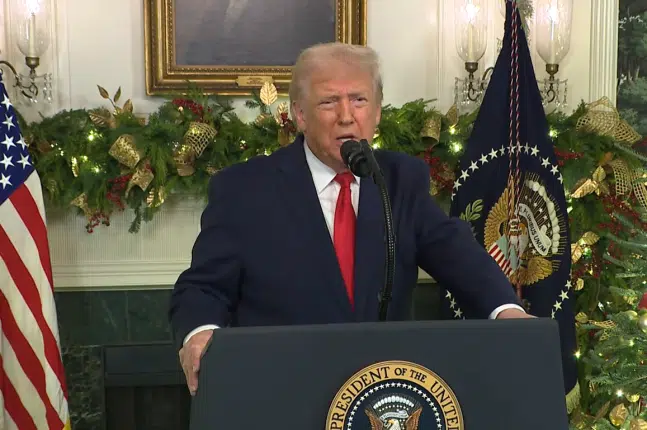
After four long years, Americans strongly rejected the failed agenda foisted upon us by Joe Biden and Kamala Harris, and former President Donald J. Trump was declared the winner after surpassing the 270 electoral vote threshold with a historic win in Michigan.
As early as last weekend after early voting closed across much of the country, there were strong signals that Harris was sunk.
First, Republicans made significant inroads in closing the early vote gap in battleground states before polls even opened for in-person voting on Tuesday.
While early voting is down significantly compared to 2020 – largely because there is no pandemic – the proportions of each party utilizing early voting methods have shifted rather substantially. Republicans are dominating a larger share of the early vote than they did four years ago.
Data shows Republicans voted early in unprecedented numbers leading up to Election Day, with data from CNN and Catalist showing that across 27 states for which early voting data was available with party registration, Republicans nearly closed the early voting gap compared to 2020.
GOP voters cast 38 percent of early voting ballots while Democrats cast 40 percent according to L2 Political’s early vote tracker, but four years ago Democrats led in early voting by twelve points, 42 percent to 30 percent. This is a substantial closing of the gap.
In the highly contested battleground state of Pennsylvania, Republicans accounted for 33 percent of the early vote this year, a ten-point gain from 2020, while Democrats accounted for 56 percent of the early vote, ten points less than 2020.
Then there is North Carolina, where Republicans made up 33 percent of the early vote this year, up two points from 2020, and Democrats made up 32 percent, down three points from 2020.
GOP gains in early voting have been smaller in other battleground states, but nonetheless significant. Arizona saw a four-point increase in Republicans voting early compared to 2020, making up 41 percent of the early vote while Democrats saw a three-point decline compared to 2020, making up 33 percent.
In Nevada, Republicans made up 37 percent of the early vote this year, a one-point gain from 2020, while Democrats made up 34 percent, a four-point decline.
Some analysts cautioned that Republican gains in the early vote could be a wash – meaning less Republicans would turn out on election day. That does not appear to be the case.
The argument that the GOP early vote would be a complete wash never really had legs when Republicans were broadly eclipsing Democrats in several states compared to the early vote spread four years ago.
Second, there is strong evidence that a good portion of the early vote included new voters, a group Trump leads Harris with substantially.
According to analysis from NBC News Decision Desk, the number of new voters – those who did not vote in 2020 – cast before election day in battleground states exceeded the 2020 vote margin by which either Trump or Biden won each state in 2020.
In other words, swells of new voters who skipped the election in 2020 were reflected in the early vote totals, indicating a vast number of these early voters are entirely new to the electorate.
Pennsylvania’s early vote total included over 100,000 new voters who did not participate in 2020, and Biden won the state by less than 80,000 votes in 2020. The new voter number in early vote alone surpassed the margin by which Biden won Pennsylvania.
In Arizona, the early vote included over 80,000 new first-time voters, far exceeding the margin by which Biden won the state in 2020 – 10,457 votes. The vast swell of new voters skewed heavily Republican. Of the new votes cast, over 35,000 belonged to new Republicans while around 23,000 belonged to new Democrats.
New voters tend to heavily favor Donald Trump compared to regular active voters – so much so that the New York Times concluded if every eligible voter voted, Trump would win. A New York Times analysis of active versus infrequent voters from this spring before Kamala Harris became the nominee, found that while Biden led among highly engaged voters, Trump led among Americans who vote infrequently.
Third, while virtually every mainstream outlet has gloated over the fact that there was already a strong gender gap emerging in the early vote data, the gap was slightly smaller than in 2020 according to analysis from CNN, Edison Research and Catalist.
The left has framed the entire election as a gender war in which women were portrayed as single-issue voters and Kamala Harris was painted as the last great hope for women to preserve abortion, and yet the gender gap did not increase in early voting. This was a warning sign that Harris was cooked.
According to longstanding historical data, not only are Democrats more likely to vote early, but women are also more likely to vote early than men are, and yet with Harris on the ballot, the early vote gender gap was smaller than it was when Biden was on the ballot.
Republicans came out and voted early in numbers that closed the early vote gap in battleground states, and in many states the first-time early vote exceeded the margin by which Biden won last time. The theory that Republicans who voted early would be “cancelled out” by lower turnout on election day proved to be false. In addition, although women are more likely to vote early, the gender gap in the early vote showed early signs that Harris was on the road to a loss.
Manzanita Miller is the senior political analyst at Americans for Limited Government Foundation.






